
There’s a lot of discussion at the moment about the health benefits and ethics of a meat-free diet. Here’s how to cut back on meat without missing out on vital nutrients.
Switching to a partial or wholly vegetarian diet can be motivated by all sorts of reasons. Some people do it for religious purposes, some see it as an ethical and more sustainable way of eating, while others believe it to be healthier. And there is a growing body of evidence to support the latter reason.
For some people, cutting back on meat and eating mostly vegetarian or vegan food is a more workable option. This increasingly popular way of eating is called ‘flexitarianism’. Whichever part of the spectrum you are on, this guide can help you get the nutrition balance right.
Plus, if you enjoy a vegetarian or vegan diet already, you’ll love our delicious new vegan recipes.
Plant power
So, how exactly do you transition to a diet higher in vegetables, even if you include some fish and meat?
Becoming vegetarian
If you don’t want to drop meat all at once, start by incorporating one meat-free meal – or an entire meat-free day – each week, and build from there. And remember, being vegetarian doesn’t protect you from unhealthy food choices. You still need to limit highly processed, sugary or high-saturated fat foods and eat lots of vegetables. You’ll also need to think about where you’ll get your protein, B12, selenium and iron from.
Going vegan
Vegans need to be particularly vigilant about vitamin B12, iodine and omega-3s, which can all be lacking in a poorly planned vegan diet. Talk to your GP about a B12 supplement if you are concerned.
Turning flexitarian
Even if you occasionally eat red meat, your iron and selenium levels may become low. As you gradually eat less meat, fish and dairy foods, you may also need to consider whether you’re getting enough vitamin B12.
Eating pescatarian
Relying on fish for your main source of protein is fine, but vary it so you consume oily fish, such as salmon and tuna, at least twice a week to make sure you get a good intake of healthy omega-3 fats.
Mind the gaps
Make sure you’re not running low on key vitamins and minerals. Here’s how to get enough:
Iron
The iron in red meat (haem iron) is much more readily absorbed than from plant sources (non-haem). However, a well-planned vegetarian diet can provide adequate amounts of iron for most people.
Boost your intake
Vegetarians: Eggs
Vegans and vegetarians: Legumes, wholegrain bread, tofu, nuts, seeds, green leafy veges, seeds and fortified cereals.
Tip
Boost iron uptake by adding foods with vitamin C, such as citrus or kiwifruit, to your meals.
Selenium
Top sources are meat and seafood, which is why vegetarians can be prone to low levels. Selenium is important for a healthy reproductive system and maintaining a robust immune system.
Boost your intake
Vegetarians: Eggs
Vegans: Brazil nuts – just two a day will be enough to meet your needs.
Vitamin B12
This essential vitamin helps us utilise energy from food and make red blood cells. It isn’t found naturally in plant-based foods, so vegans should consider a daily supplement.
Boost your intake
Vegetarians: Dairy, eggs, fortified soy-based burgers/sausages
Vegans: Fortified milk alternatives, yeast spreads.
Calcium
Milk, cheese and yoghurt are the best sources of calcium. If you don’t eat dairy, choose calcium-fortified milk alternatives to fill the gap.
Boost your intake
Vegetarians: Milk, cheese and yoghurt
Vegans: Fortified milk alternatives, firm tofu (see tip), tempeh, nuts, seeds.
Tip
Calcium sulfate is commonly used in tofu production, but a magnesium-based coagulant can be used instead. Check your tofu is high in calcium.
Your vegetarian shopping list
Keep your diet well balanced by adding these staples to your trolley:
Beans, peas and lentils
- Provide high-quality protein and are rich in a type of fibre called ‘resistant starch’, which is great for promoting gut health.
Eggs
- Are a valuable source of protein and are packed with zinc and folate. Experts agree healthy people don’t need to limit their egg intake, and those at higher risk of heart disease can happily include six a week.
Wholegrain bread
- Is a rich source of low-GI carbohydrates. If you pick a loaf with added seeds, such as soy-linseed, you’ll boost your intake of healthy omega-3 fats.
Tofu, tempeh and quorn
- Are all rich in protein and suit a range of dishes. Firm tofu and tempeh can be used in stir-fries and curries, with silken tofu suitable for sauces. Quorn comes from a fungus and is available as mince, pieces or sausages.
Cheese
- Is an easy way to boost protein and calcium and add flavour to meals.
Nuts and nut butters
- Provide healthy fats, protein and a range of vitamins and minerals. Aim for a 30g handful every day and eat a variety, such as walnuts, Brazil nuts, cashews and almonds.
Protein portions
You’ll need to eat good sources of protein to meet your daily quota. We need at least 78g in an average 8700kj. Use our handy guide to work out how to get enough:
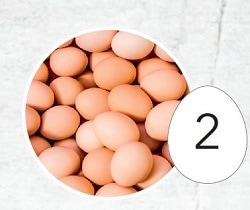
Quick size check
2 large eggs
Provide: 15g protein
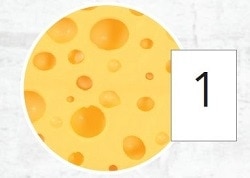
Quick size check
1 small matchbox
Weighs: 40g
Provides: 11g protein
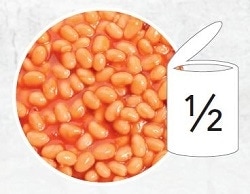
Quick size check
½ can
Weighs: 200g
Provides: 10g protein
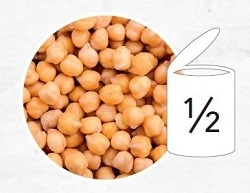
Quick size check
½ can
Weighs: 125g
(drained weight)
Provides: 10g protein
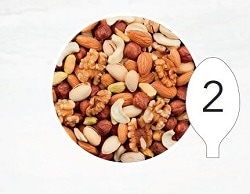
Quick size check
2 level tablespoons
Weigh: 30g
Provide: 6g protein
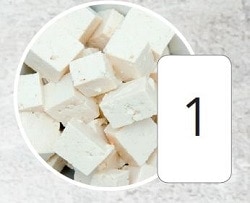
Quick size check
Largest smartphone
Weighs: 125g
Provides: 15g protein
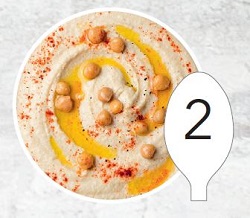
Quick size check
2 heaped tablespoons
Weigh: 50g
Provide: 3g protein
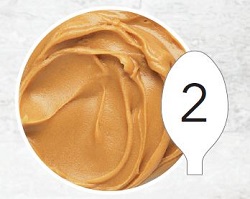
Quick size check
2 heaped tablespoons
Weigh: 30g
Provide: 11g protein
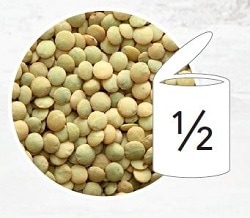
Quick size check
½ can
Weighs: 120g
(drained weight)
Provides: 6g protein
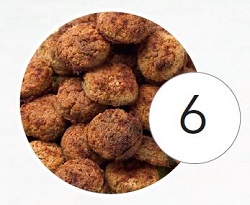
Quick size check
6 small falafels
Weigh: 150g
Provide: 12g protein
Article sources and references
- Better Health Channel. 2012. Vegetarian and vegan eating, betterhealth.vic.gov.auhttps://www.betterhealth.vic.gov.au/health/healthyliving/vegetarian-and-vegan-eating
- Marsh et al. 2013. Protein and vegetarian diets. Medical Journal of Australia 199:S7‑S10https://www.mja.com.au/journal/2013/199/4/protein-and-vegetarian-diets
- National Health and Medical Research Council & Ministry of Health. Nutrient Reference Values for Australia and New Zealand: Vitamin B12, nrv.gov.auhttps://www.nrv.gov.au/
- Saunders et al. 2013. Iron and vegetarian diets. Medical Journal of Australia 199:S11-6https://www.mja.com.au/journal/2013/199/4/iron-and-vegetarian-diets
- Zeuschner et al. 2013. Vitamin B12 and vegetarian diets. Medical Journal of Australia 199:S27-32https://www.mja.com.au/journal/2013/199/4/vitamin-b12-and-vegetarian-diets
www.healthyfood.com










